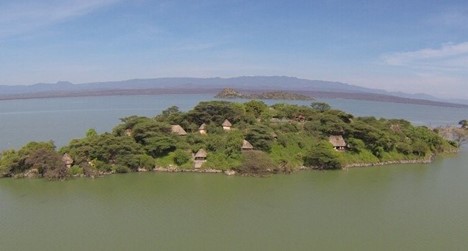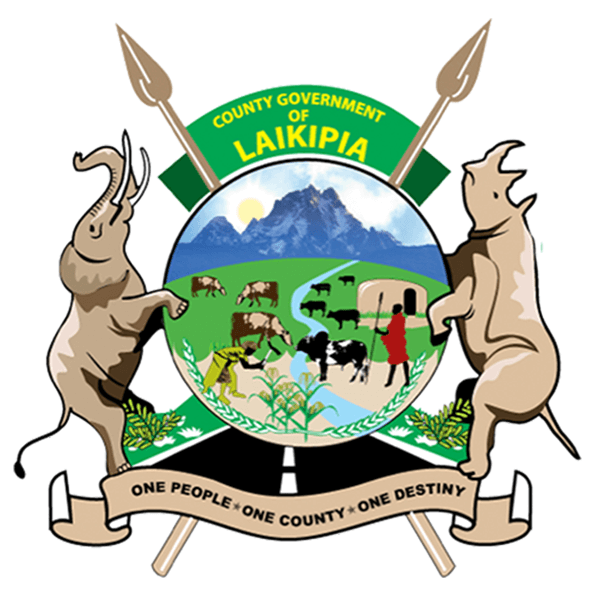Baringo County is one of the 47 counties in Kenya, located in the former Rift Valley Province. Kabarnet, which has both its headquarters and major town. The county is home to Lake Baringo, Lake Bogoria and Lake Kamnarok.
Tourism Attractions
a) Lake Baringo

Lake Baringo, with a surface size of 130 square kilometers (50 square miles) and a height of 970 meters (3,180 feet), is the second-most northern lake in the Kenyan Rift Valley after Lake Turkana. The Molo, Perkerra, and Ol Arabel are just a few of the rivers that feed the lake. Without a clear outlet, it is hypothesized that the water seeps through lake sediments and into the fractured volcanic bedrock.
The lake is a sight to admire, a freshwater lake with a sizable population of hippos. It contains a number of islands, one of which is said to be owned by a guy and his ten wives. A lot of reptiles live in Lake Baringo, including crocodiles, which may be seen slyly lazing on the lake’s shores. When you go, take a boat trip, eat some delicious fish, and watch the sun set from the lake’s shores, among other things.

b) Lake Baringo Snake park

c) Lake Kapnarok
The lake, which used to be the second-largest oxbow lake and the second-largest crocodile habitat, has now lost some of its former fame. Human invasion is the main cause of its demise. However, the government has worked with the local population to bring this Kerio River tributary back to health. Some crocodiles that have survived have found a home in the Lake. It serves as an elephant breeding ground during its busiest time. The dikdik and Rothschild giraffe are among the many animals that may be seen in the area.
d) Ruto Conservancy

The Ruko Conservancy, a lesser-known jewel, is mostly administered by residents of the Rugus and Komolion, two formerly rival tribes. Conflicts within the community endangered wildlife, which was slaughtered as a result, and resulted in the giraffe’s disappearance. 8 Rothschild Giraffes were relocated to this conservancy, where they are currently being raised in the hopes of seeing a population rise. In addition to being a giraffe haven, this conservation area is a realistic example of how people and wildlife can live in harmony because you are free to roam about among the animals that are there.
e) Lake Bogoria
A little north of the equator in Kenya, south of Lake Baringo, is a saline, alkaline lake known as Lake Bogoria (originally Lake Hannington). It is located in a volcanic zone, and is home at times to one of the world’s largest populations of lesser flamingos.
More than 200 hot springs and geysers may be found near Lake Bogoria, which is renowned for its flamingo population. The subsurface volcanic activity is what causes the geysers. The area is a natural sauna because the hot springs can reach temperatures of 100 degrees. The lake is surrounded by a national park where you get to see various species, such as gazelles, antelopes, and giraffes.
f) Lake Kamnarok Game Reserve
Lake Kamnarok is an oxbow lake with the second largest population of crocodiles in Africa, after Lake Chad. The Lake is found within the Lake Kamnarok Game Reserve. The reserve is also home to giraffes, elephants, buffaloes, waterbucks, warthogs, dik-dik and various water birds. The reserve is located in Kerio Valley, next to Lake Bogoria.
Farming Activities
Agriculture , Livestock Development and Fisheries
Baringo County’s primary economic pillars are crop cultivation and livestock raising. Given that it is the home to more than 2 million animals, much attention is placed on this industry as a launching pad for economic development.
The county administration has prioritized irrigation over relying solely on rainfall for crop production because the region is primarily semi-arid. The creation of nearly 3000 acres of irrigated land in 13 irrigation schemes, including Ng’enyin, Emining, Ketiptergek, Rebeko, Mukuyuni, and Kapkelewa, is what distinguishes this. The main crops grown in the county are maize, finger millet, sorghum, beans, cowpeas, green grams, garden peas, Irish potatoes, and sweet potatoes, as well as coffee and rice.




